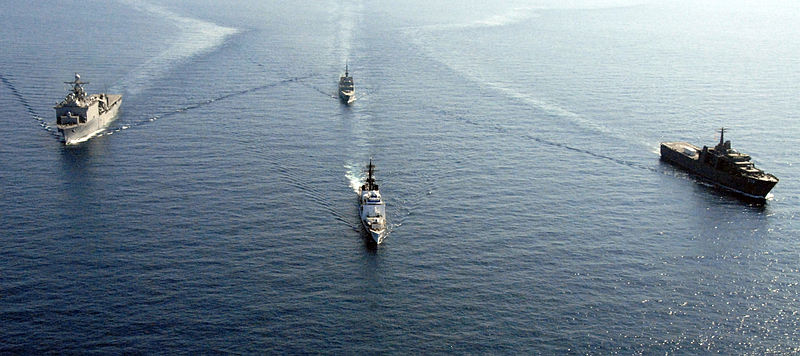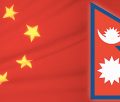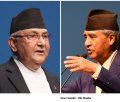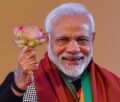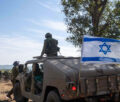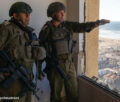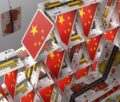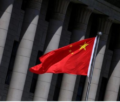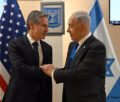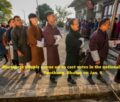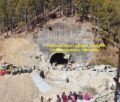As tensions mount with China US shifting bulk of Navy ships to Asia-Pacific

The United States will deploy the majority of its naval forces to the Asia-Pacific region over the next decade, Secretary of Defense Leon Panetta announced Saturday in a speech to a security conference in Singapore. The move is part of a major shift in the global strategy of American imperialism that puts China at the top of the US target list.
The mobilization of warships will be accompanied by an increase in the number of military exercises conducted by the Pentagon in the region, involving air, sea and land forces. Most will be carried out in conjunctions with countries that are openly or tacitly allied with the US against China, including Japan, South Korea, Australia and the Philippines.
In his speech to the conference, Panetta elaborated on the “pivot to Asia” announced by Obama last year, in which he indicated that the withdrawal of US forces from Iraq and the beginning of a drawdown from Afghanistan would allow the US military to deploy far greater resources to the Far East.
“All of the U.S. military services are focused on implementing the president’s guidance to make the Asia-Pacific a top priority,” Panetta said, adding: “While the U.S. military will remain a global force for security and stability, we will of necessity rebalance towards the Asia-Pacific region.”
The current deployment of the US Navy is approximately a 50-50 split between the Atlantic and Pacific. This will change by 2020 to a 60-40 split in favor of the Pacific, Panetta said: “That will include six aircraft carriers in this region, a majority of our cruisers, destroyers, Littoral Combat Ships, and submarines.” He called these forces “the core of our commitment to this region.”
Panetta singled out for praise the agreement last fall with the Australian government for the deployment of US Marines in northern Australia, calling it “a critical component” of the US military buildup.
“This Marine Air-Ground Task Force will be capable of rapidly deploying across the Asia-Pacific region,” he said, thus confirming that it will be able to intervene at key choke points like the Strait of Malacca, vital to China’s export and import trade, particularly oil supplies from the Middle East and Africa.
The US is negotiating a similar agreement for stationing ground forces on a rotating basis in the Philippines, he said, and is pursuing such arrangements with other countries in the region, although he did not name them. In 2011 the US military conducted 172 military exercises in the Asia-Pacific region, and that number will increase considerably this year.
Panetta claimed that the US buildup was not directed against China, and even made the Orwellian claim that “increased US involvement in this region will benefit China as it advances our shared security and prosperity for the future.”
There is no mistaking the meaning of the measures he announced, however. More than half the US Navy is to be deployed to the Asia-Pacific. What other country could be the target?
North Korea has a handful of coastal vessels that are no threat to South Korea, let alone the United States. Nearly every other country in the region is either a formal US ally, like Japan, South Korea, the Philippines and Australia, a client state like Taiwan and Singapore, or a prospective partner in military action against China, like India.
When Panetta declared, referring to US relations with China, “We in the United States are clear-eyed about the challenges,” all the conference participants, as well as Beijing, undoubtedly got the message.
If there were any doubts, Panetta closed his address with an invocation of the history of US wars in the region. “Over the course of history, the United States has fought wars, we have spilled blood, we have deployed our forces time and time again to defend our vital interests in the Asia-Pacific region,” he declared.
iscuss joint operations against North Korea.
TPanetta followed up his appearance in Singapore with a visit to two countries that have fought wars with China in the past 50 years—Vietnam (which fought a war with China in 1979) and India (in 1962). In Vietnam Sunday he spoke to US sailors on board a naval supply ship anchored at Cam Ranh Bay, which was the biggest US Navy base in Asia during the US war in Vietnam.
Besides the public posturing, Panetta had closed-door meetings on the sidelines of the Singapore conference with a series of defense ministers and other top officials from Japan, South Korea, the Philippines, Australia, Malaysia and Singapore. The defense ministers of Thailand and Cambodia invited Panetta to visit their countries.
Panetta held a trilateral meeting with South Korean National Defense Minister Kim Kwan Jin and Japan Parliamentary Senior Vice Minister of Defense Shu Watanabe to dhe meeting follows a press report in the United States that US and South Korean special forces have conducted infiltrations operation into North Korea to gather intelligence on secret underground military facilities.
Army Brigadier General Neil Tolley, commander of US special forces in South Korea, told a conference in Florida that North Korea has dug thousands of tunnels in the 60 years since the end of the Korean War. “The entire tunnel infrastructure is hidden from our satellites,” Tolley said. “So we send ROK soldiers and US soldiers to the North to do special reconnaissance.”
While an aide to Tolley later claimed that he “misspoke,” the general’s remarks, as reported by the press, were unequivocal. According to The Hill web site, “Tolley told attendees during a special operations industry conference in May that elite US troops have been dropped behind North Korean lines to pinpoint the specific locations of Pyongyang’s vast network of underground military bases. American commandos have identified hundreds of underground munitions facilities, along with thousands of subterranean artillery positions…”
The report gives a glimpse of the real posture of the United States military in the region, behind the usual diplomatic blather about peaceful intentions and defending the “free world.” US imperialism is the most powerful and aggressive military force on the planet.
Panetta’s bilateral meeting with Singapore Minister of Defense Ng Eng Hen finalized the agreement for the stationing of four US littoral combat ships in the island state. These ships are designed to operate in near-shore environments, particularly against mines, submarines and small, light surface craft.
General Martin E. Dempsey, chairman of the Joint Chiefs of Staff, said the ships would be rotated in and out of Singapore for six to ten months at a time. The sailors will live on board and not stationed or home-ported in Singapore. But the result is that at any one time, some 300 US navy personnel will be in Singapore, keeping watch over the adjacent Strait of Malacca. The ships will also move about the region, to Malaysia, Indonesia, the Philippines and elsewhere in southeast Asia.
Following the Singapore conference, Dempsey traveled to the Philippines for meetings with President Benigno Aquino III and Lt. Gen. Jessie Dellosa, chief of staff of the Armed Forces of the Philippines. Philippine naval forces recently confronted Chinese vessels over access to the Scarborough Shoal, a small group of islets and reefs in the South China Sea.
(Courtesy: wsws.org)
-
Book Shelf
-
 Book Review
DESTINY OF A DYSFUNCTIONAL NUCLEAR STATE
Book Review
DESTINY OF A DYSFUNCTIONAL NUCLEAR STATE
- Book ReviewChina FO Presser Where is the fountainhead of jihad?
- Book ReviewNews Pak Syndrome bedevils Indo-Bangla ties
- Book Review Understanding Vedic Equality….: Book Review
- Book Review Buddhism Made Easy: Book Review
- Book ReviewNews Elegant Summary Of Krishnamurti’s teachings
- Book Review Review: Perspectives: The Timeless Way of Wisdom
- Book ReviewNews Rituals too a world of Rhythm
- Book Review Marx After Marxism
- Book Review John Updike’s Terrorist – a review
-
-
Recent Top Post
-
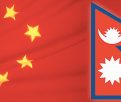 Commentaries
Impasse over BRI Projects in Nepal
Commentaries
Impasse over BRI Projects in Nepal
-
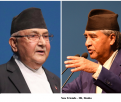 CommentariesNews
Yet another Musical Chairs in Kathmandu
CommentariesNews
Yet another Musical Chairs in Kathmandu
-
 CommentariesTop Story
Spurt in Anti-India Activities in Canada
CommentariesTop Story
Spurt in Anti-India Activities in Canada
-
 NewsTop Story
Nepal: Political Stability Under Threat Again
NewsTop Story
Nepal: Political Stability Under Threat Again
-
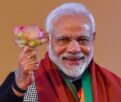 NewsTop Story
Accountability Tryst With 2024 Ballot….
NewsTop Story
Accountability Tryst With 2024 Ballot….
-
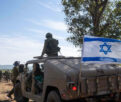 NewsTop Story
What Would “Total Victory” Mean in Gaza?
NewsTop Story
What Would “Total Victory” Mean in Gaza?
-
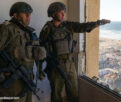 CommentariesTop Story
The Occupation of Territory in War
CommentariesTop Story
The Occupation of Territory in War
-
 CommentariesTop Story
Pakistan: Infighting in ruling elite intensifies following shock election result
CommentariesTop Story
Pakistan: Infighting in ruling elite intensifies following shock election result
-
 CommentariesTop Story
Proforma Polls in Pakistan Today
CommentariesTop Story
Proforma Polls in Pakistan Today
-
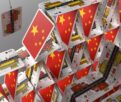 CommentariesTop Story
Global South Dithering Away from BRI
CommentariesTop Story
Global South Dithering Away from BRI
-
AdSense code


